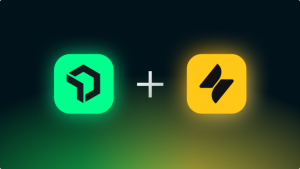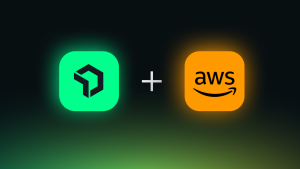
In today's modern software landscape, MEAN, MERN, LAMP, and LAMPy stacks have emerged as popular choices for building dynamic and efficient web applications. However, as application grows in complexity, the need for comprehensive observability becomes higher. This is where New Relic quickstarts come in, offering a streamlined approach to instrumenting your chosen stack and gaining deeper insights into your application's performance and health with pre-built dashboards and alerts.
Why MEAN, MERN, LAMP, and LAMPy?
Web dev stacks like MEAN, MERN, LAMP and LAMPy have surged in popularity due to their versatility, robustness, and ease of use. Each acronym represents a collection of technologies tailored for modern web development.
MEAN (MongoDB, Express.js, AngularJS, Node.js) and MERN (MongoDB, Express.js, React, Node.js) leverage JavaScript across the entire stack, streamlining development and fostering code reuse. Meanwhile, LAMP (Linux, Apache, MySQL, PHP) and LAMPy (Linux, Apache, MySQL, Python) combine powerful open-source technologies, providing scalability and flexibility.
As a result, these stacks have garnered considerable traction. According to the Stack Overflow Developer Survey:
- Node.js, the core technology in MEAN and MERN stacks, is used by over 52% of professional developers.
- PHP consistently ranks among the top 5 most popular programming languages, and is used by over 75% of websites whose server-side programming language is known.
- Python's popularity has surged in recent years, ranking second only to JavaScript in the Stack Overflow Developer Survey. Frameworks like Django built on Python power many popular websites like Instagram and Spotify.
Advantages of MEAN, MERN, LAMP, and LAMPy stacks:
MEAN, MERN, LAMP, and LAMPy stacks empower developers to build dynamic, scalable, and efficient web applications. They’re popular for a variety of strengths, including:
- Cost-efficiency and open source: All of the technologies in these stacks are open source, allowing developers and companies to utilize them without incurring licensing fees, reducing the cost of building applications.
- Streamlined development process: Establishing a new web development stack requires testing various frameworks, modules, tools, and libraries. The MEAN, MERN, LAMP, and LAMPy stacks provide a proven and reliable solution, so developers can focus on what they’re building instead of exploring which tools to use.
- Flexibility: The versatility, robustness, and ease of use make the stacks popular choices. Developers can substitute different components for each layer, such as using an alternative operating system.
- Continuous maintenance: The stacks benefit from contributions by software experts worldwide who actively modify, comment on, and review publicly available source codes. These popular technologies undergo regular maintenance and updates to ensure their relevance and security.
- Ubiquity: Widely adopted technologies like Node.js, MongoDB, and Python have robust support from a vast global IT community. Users can easily access public forums for information and support.
Common challenges
While MEAN, MERN, LAMP, and LAMPY stacks have their advantages, they can present some common challenges for developers.
- As applications grow, identifying performance bottlenecks, errors, and user frustrations becomes challenging.
- Slow loading times, errors, database performance issues, and frontend responsiveness can hamper user experience.
- Memory leaks in Node.js applications can gradually degrade performance over time.
Quickstarts for instant observability:
To make it easier to start monitoring your MEAN, MERN, LAMPand LAMPy stacks, we’ve built dedicated quickstarts to address the specific needs of developers working with these technologies. These quickstarts provide a pre-configured experience, eliminating the need for manual configuration from scratch and streamlining the instrumentation process. Each includes out-of-the-box dashboards and alerts so you can keep an eye on the right metrics.

Get a pre-built dashboard for your MEAN and MERN stacks with the quickstart.
- MEAN stack (MongoDB, Express.js, Angular, Node.js):
- Addresses challenges like slow loading times, errors, database performance issues, and frontend responsiveness.
- Features pre-built dashboards, alerts, and documentation tailored for MEAN stack applications.
- Alerts for critical changes to First Contentful Paint (FCP), transaction errors, low server memory, and database uptime.
- MERN stack (MongoDB, Express.js, React, Node.js):
- Similar to the MEAN stack quickstart, tailored for React applications, offering insights into component performance and user interactions.
- Features pre-built dashboards, alerts, and documentation tailored for MEAN stack applications.
- Alerts for first critical changes to FCP, transaction errors, low server memory, and database uptime.
- LAMPy stack (Linux, Apache, MySQL, Python):
- Provides pre-built dashboards for server metrics, database performance, and Python framework insights.
- Offers instrumentation for Apache web server, MySQL database, and Python applications.
- Alerts for critical changes to CPU utilization, memory usage, questions per second, and transaction errors.
- LAMP stack (Linux, Apache, MySQL, PHP):
- Features a pre-built dashboard to easily monitor applications built with the LAMP architecture.

Monitor your LAMP or LAMPy stack in minutes with the quickstart dashboards.
Beyond quickstarts: scaling your observability journey
While quickstarts offer a robust foundation, observability is an ongoing process. Here are some additional tips to scale your observability journey:
- Customize dashboards and alerts: Refine pre-built dashboards and configure custom alerts based on your specific application's needs.
- Leverage New Relic advanced features: Explore advanced features like distributed tracing, error management, and connected application performance monitoring (APM) and infrastructure to gain deeper insights for your entire system.
- Integrate with other tools: Integrate New Relic with other tools in your development workflow for a comprehensive view of your application's health. Find more quickstarts in New Relic Instant Observability.
Conclusion
By embracing observability with New Relic quickstarts, developers can optimize performance, resolve issues, and deliver superior user experiences. Observability is an ongoing journey, and New Relic stands as a reliable partner to support every step of the way.
Next steps
Install a quickstart by visiting the following links and clicking Install now. Then follow the guided process to see your data in the pre-built dashboards.
Haven’t signed up for your New Relic full-access user account yet? Create a free account and you’ll get 100 GB/month of free data ingestion and access to our platform’s 30+ capabilities.
The views expressed on this blog are those of the author and do not necessarily reflect the views of New Relic. Any solutions offered by the author are environment-specific and not part of the commercial solutions or support offered by New Relic. Please join us exclusively at the Explorers Hub (discuss.newrelic.com) for questions and support related to this blog post. This blog may contain links to content on third-party sites. By providing such links, New Relic does not adopt, guarantee, approve or endorse the information, views or products available on such sites.




